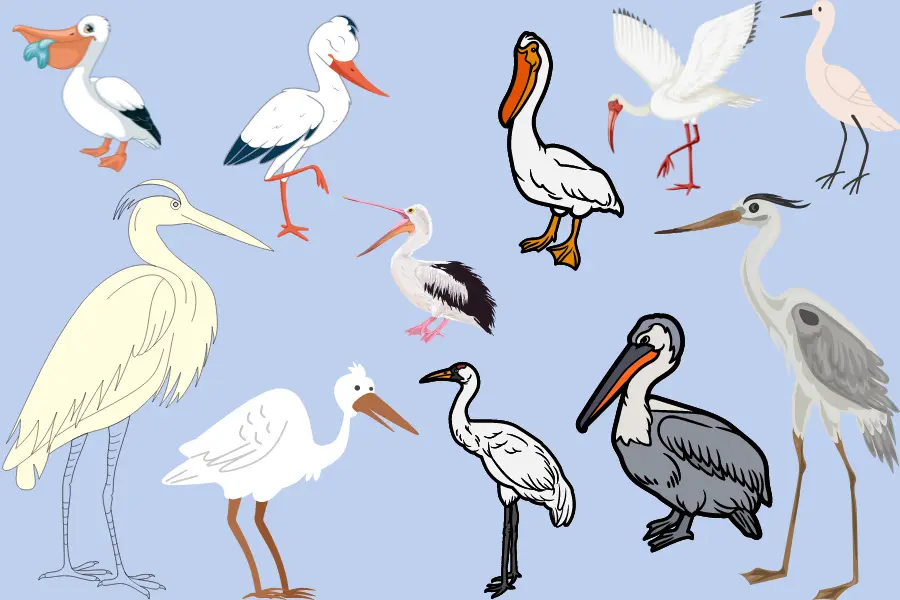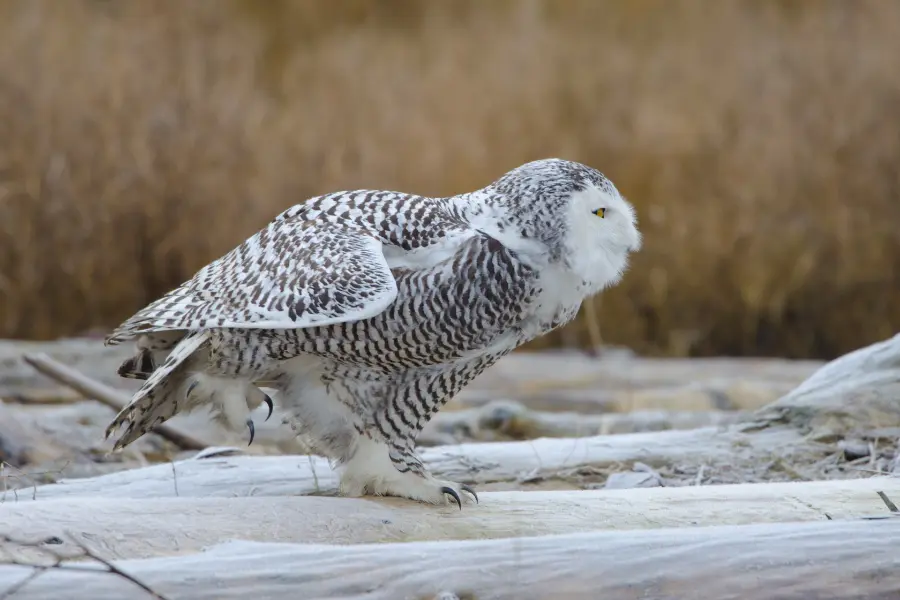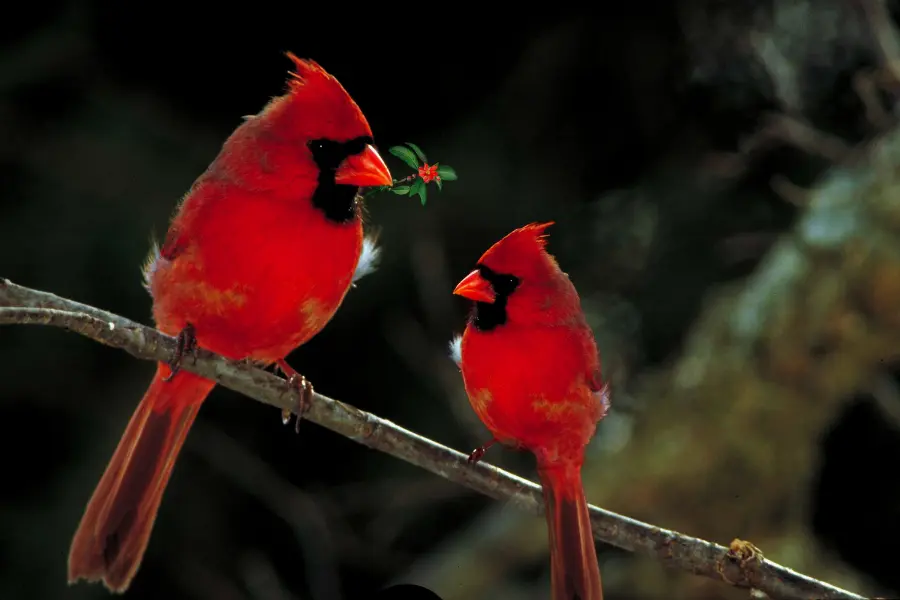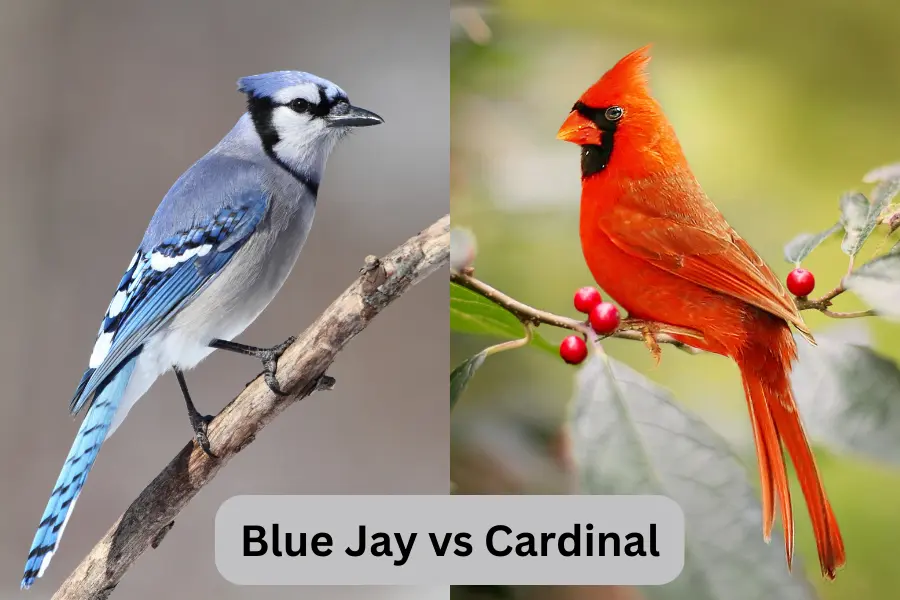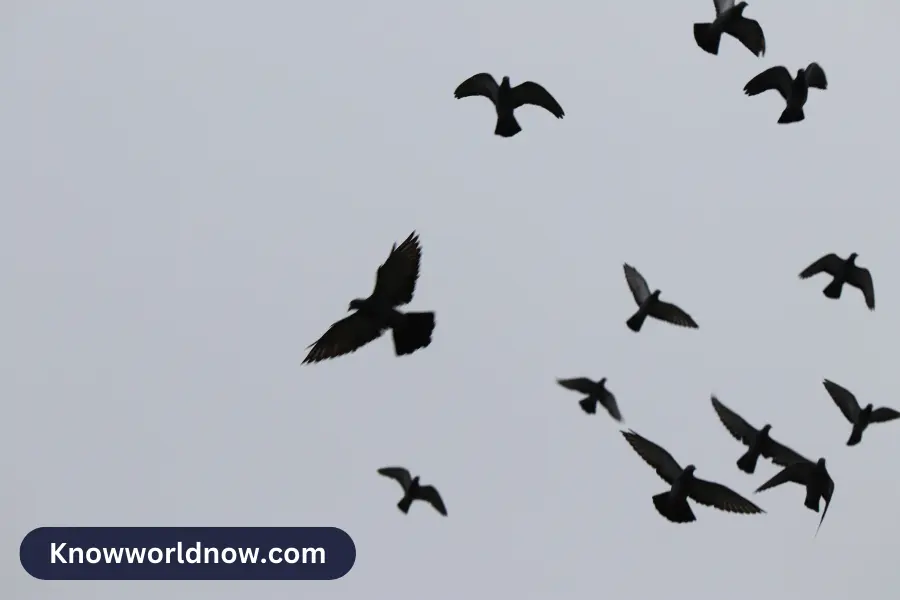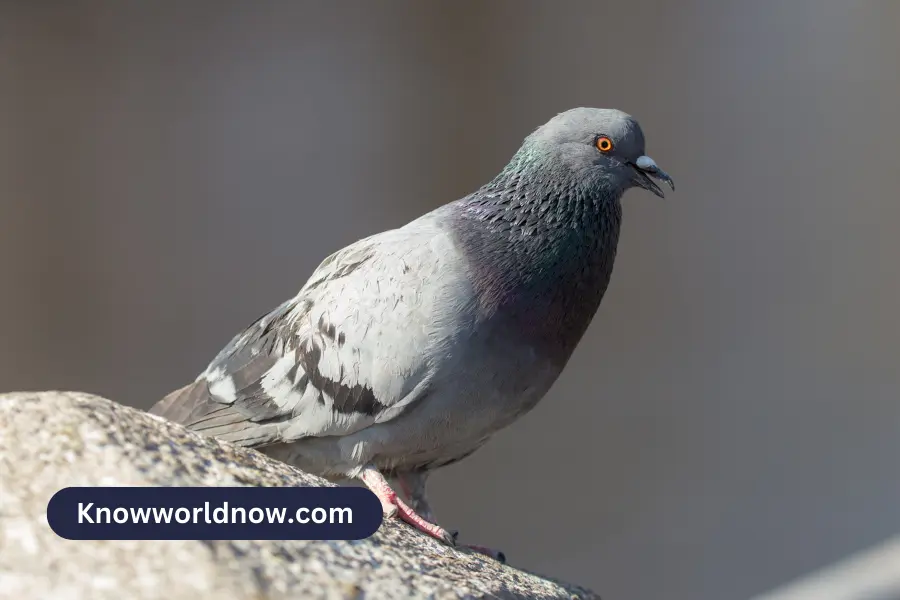Wyoming has a reputation for having a lot of birds. If you visit Wyoming, you will get to see more than 400 species of birds there. As Wyoming offers diversity, migratory routes, and protected areas, it is a safe place for birds to grow.
You do not even have to search for birds in Wyoming. You will find them almost everywhere, including backyards, lakes, parks, and house roofs. Wyoming is home to many unique species as well, but there are some common birds in Wyoming that have become an important part of the state.
People also love to read:
Yellow Cardinal Spiritual Meaning
Do Owls Hibernate or Migrate in Winter
Common Birds Wyoming
If you are a bird lover, Wyoming can be the Mecca for you. You will get to see so many birds there. Here are the 35 most common birds in Wyoming that you will find easily.
1. American Robin
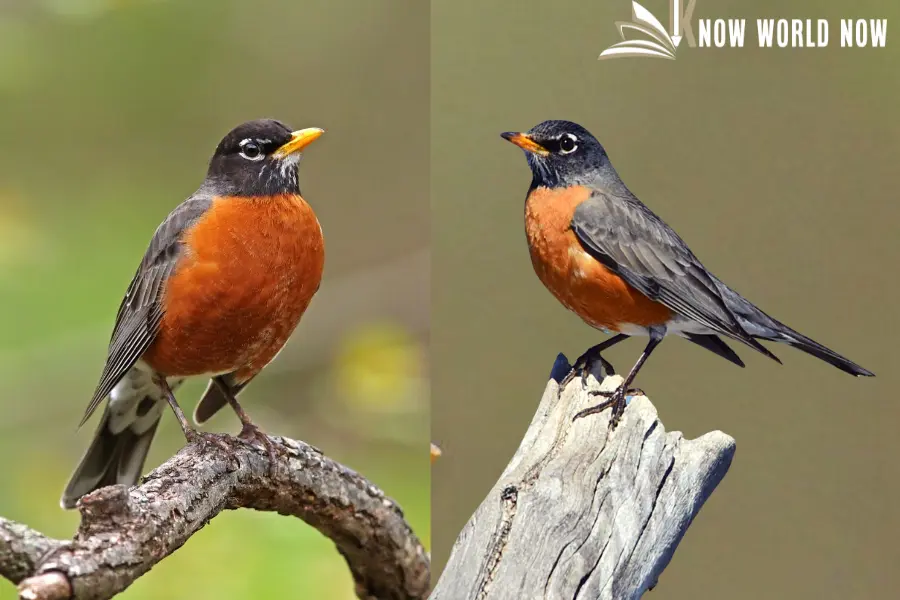
| Characteristics | Information |
| Scientific name | Turdus migratorius |
| Color | Brownish-gray back, orange-red breast |
| Average lifespan | 2 years in the wild, up to 14 years in captivity |
| Size | 9-11 inches |
| Weight | 2.7-3.0 ounces |
| Diet | Insects, other invertebrates, berries, fruit |
| Habitat | Woodlands, forests, suburban areas, parks, gardens |
| Flying speed | Up to 30 mph |
One of the most common birds Wyoming is the American Robin. You can see them all the time in Wyoming. However, they are seen more in summer and spring. They are popular for their distinctive red breast and cheery song.
Their breeding time is in early spring when they attract their mates through singing with melodious warbles and chirps and territorial displays. You can spot these small birds almost everywhere in Wyoming, including woodlands, forests, suburban areas, parks, and gardens.
2. Mountain Bluebird
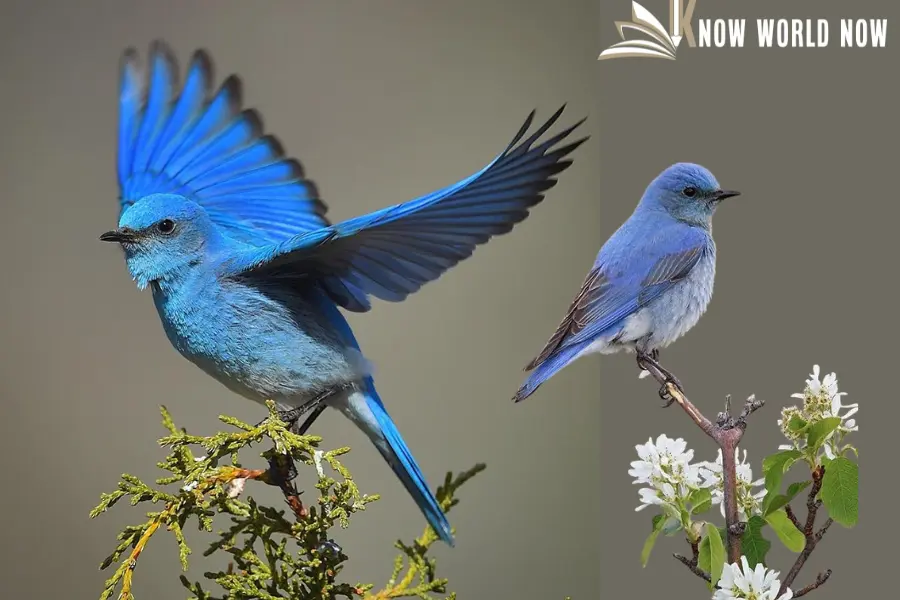
| Characteristics | Information |
| Scientific name | Sialia currucoides |
| Color | Bright blue with white underbelly and rust-colored throat |
| Average lifespan | 6-10 years in the wild |
| Size | 6.3-8.3 inches |
| Wingspan | 12.2-13.4 inches |
| Weight | 1.1-1.2 ounces |
| Diet | Insects, fruits, and berries |
| Habitat | Open grasslands, meadows, and other open habitats with low vegetation and some scattered trees or shrubs |
| Flying speed | 17-23 mph |
These bluebirds are mostly seen in Wyoming during the breeding season, which typically lasts from April to July. You may also spot them during migration when they pass through the state. They are popular for their bright blue plumage.
Like most birds, the male bluebirds attract their female mates by singing, displaying their bright plumage, and offering nest materials to females. Their bright plumage and offering nest materials to females. They are also much smaller and weigh less than 2 ounces.
3. Red-winged Blackbird
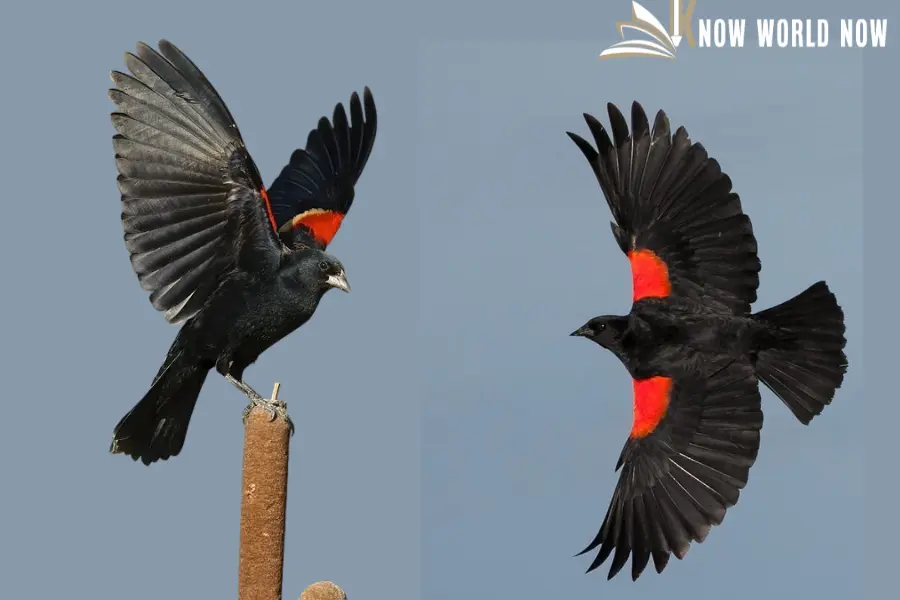
| Characteristics | Information |
| Scientific name | Agelaius phoeniceus |
| Color | Males have glossy black feathers with distinctive red and yellow shoulder patches, while females are streaked brown with paler breast and throat |
| Average lifespan | 2-3 years in the wild |
| Size | 7-9 inches |
| Wingspan | 12-15 inches |
| Weight | 1.2-2.1 ounces |
| Diet | Insects, seeds, and small fruits |
| Habitat | Wetlands, marshes, and other freshwater habitats with tall vegetation |
| Flying speed | 20-30 mph |
As their name suggests, they are birds in black color with a red flick on their wings. They are also in size, only 7-9 inches on average. However, these small birds can fly almost 30 miles per hour! In the open wild, they can survive up to three years.
Red-winged Blackbirds are popular for their striking red and yellow shoulder patches on the males. They are most common in Wyoming during the summer months. They attract mates through singing and territorial displays. They sing a distinctive “conk-a-ree” song, with the males singing from high perches to establish territory and attract females.
4. Western Meadowlark
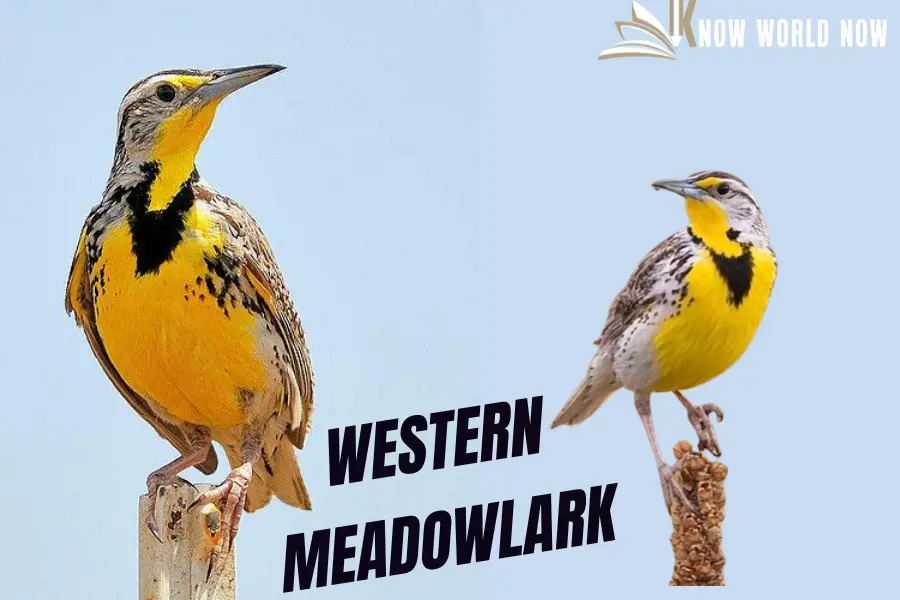
| Characteristics | Information |
| Scientific name | Sturnella neglecta |
| Color | Brownish upperparts with black and white striped head, bright yellow underparts with black V-shaped collar |
| Average lifespan | 6 years in the wild |
| Size | 8.5-11 inches |
| Wingspan | 16-18 inches |
| Weight | 3.5-5.0 ounces |
| Diet | Insects, spiders, seeds, and small fruits |
| Habitat | Grasslands, prairies, and meadows with scattered shrubs or trees |
| Flying speed | 20-25 mph |
If you ever visit Wyoming for bird watching, then do not miss the Western Meadowlark. These small birds are very colorful, a mixture of black, white, and bright yellow. Besides, they sing a beautiful, flute-like melody, often from perches such as fence posts or shrubs.
They are less than a foot in size and weigh about 5 ounces. But with their little wingspan of 18 inches, they can fly up to 25 miles per hour. You will spot them in Grasslands, meadows, and also on trees. If you do not want to miss them for finding, then visiting Wyoming from March to August is better as they are more commonly spotted during this time of the year.
5. House Sparrow
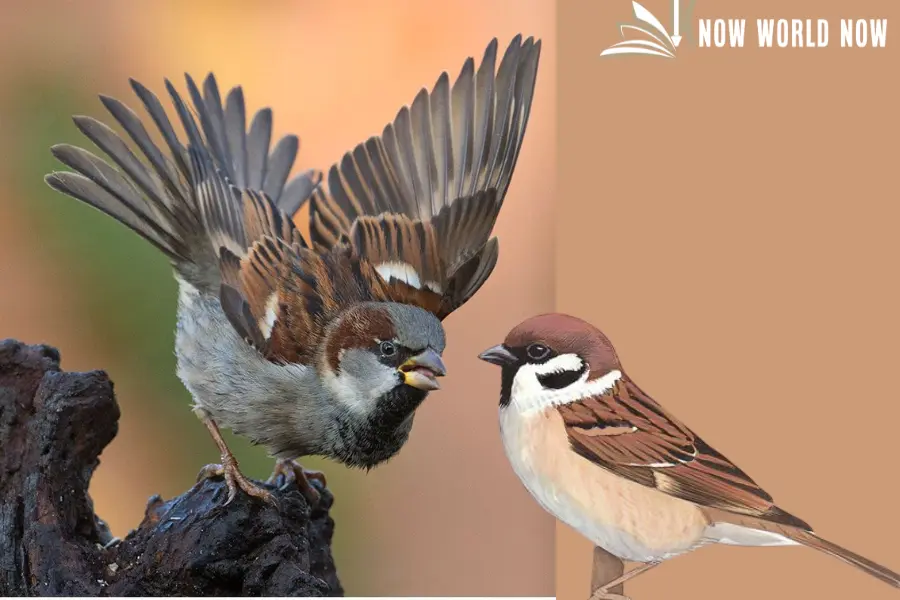
| Characteristics | Information |
| Scientific name | Passer domesticus |
| Color | Brownish-gray upperparts, gray underparts, and black bib on throat |
| Average lifespan | 3-4 years in the wild |
| Size | 5.5-7.1 inches |
| Wingspan | 7.5-9.1 inches |
| Weight | 0.9-1.4 ounces |
| Diet | Seeds, insects, and small fruits |
| Habitat | Urban and suburban areas, farmlands, and grasslands |
| Flying speed | 15-25 mph |
You may love to watch birds and will also enjoy playing with them. But do all kinds of birds like to come closer to humans? Not necessarily. However, House Sparrow is among the common birds Wyoming that like to live close to humans.
House Sparrows are a non-native bird species that are found throughout Wyoming and much of North America. You can find them any time of the year in urban and suburban areas. Their body is a mixture of black and gray. These birds are very small, only 7 inches, which makes them more adorable.
They live on seeds, insects, and small fruits, which help them live up to four years.
6. Black-capped Chickadee
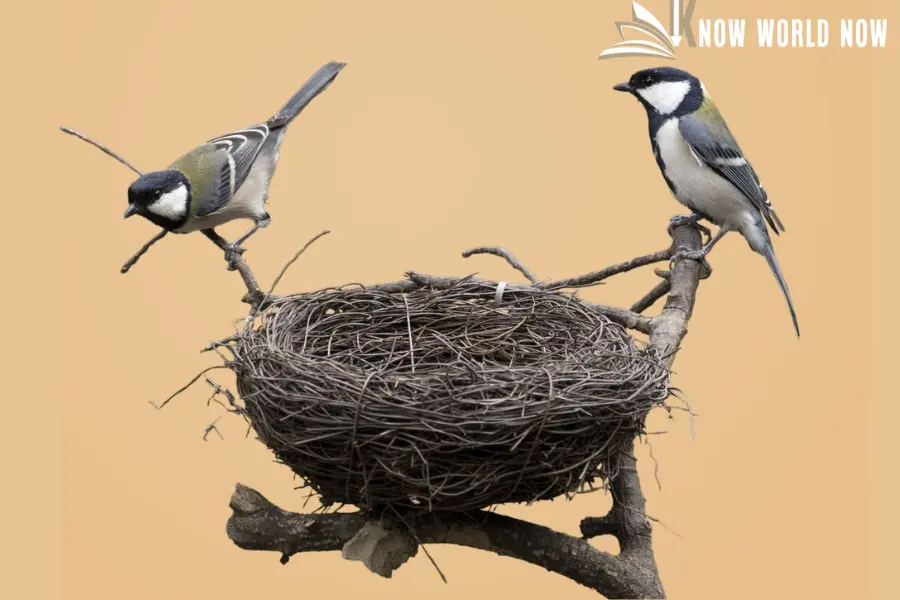
| Characteristics | Information |
| Scientific name | Poecile atricapillus |
| Color | Black cap and bib, white cheeks, gray back, and buff-colored underparts |
| Average lifespan | 1-2 years in the wild |
| Size | 4.7-5.9 inches |
| Wingspan | 6.3-8.3 inches |
| Weight | 0.3-0.5 ounces |
| Diet | Insects, seeds, and berries |
| Habitat | Deciduous and mixed forests, parks, and suburban areas |
| Flying speed | 18-24 mph |
If you love birds then you cannot but adore these tiny little birds. They are so adorable and cute. Their white cheeks, gray back, and black cap will lure you into hugging them. They are hardly six inches in size and have a wingspan of approximately 9 inches.
You can find them year-round in the forests and parks. They Are generally friendly towards humans, especially those who feed them. However, they are still wild birds, so it is safe for you to adore them from a distance.
7. Song Sparrow
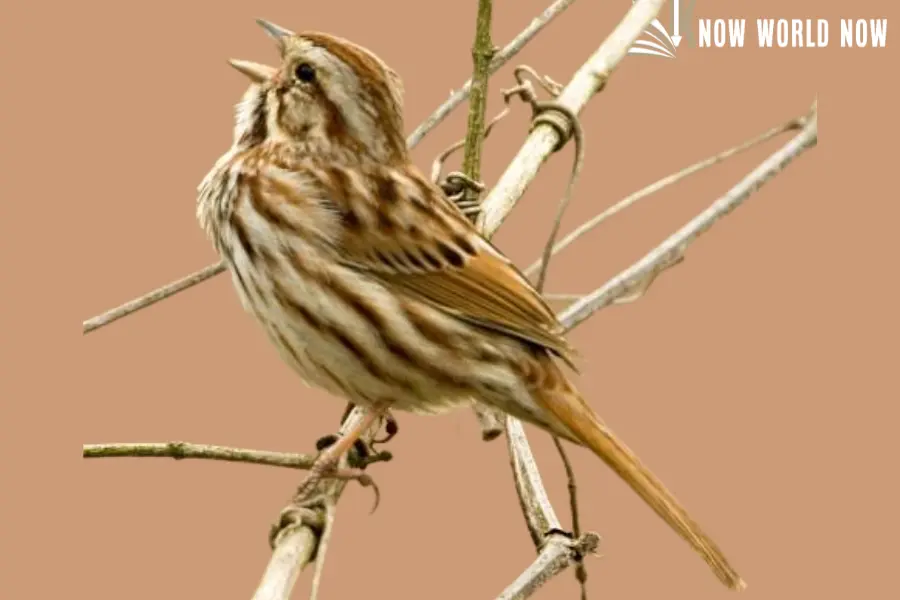
| Characteristics | Information |
| Scientific name | Melospiza melodia |
| Color | Brown upper parts with streaks, grayish-white underparts, and brown streaks on the chest and flanks |
| Average lifespan | 2-3 years in the wild |
| Size | 5.5-7.1 inches |
| Wingspan | 7.9-9.8 inches |
| Weight | 0.4-1.1 ounces |
| Diet | Seeds, insects, and small fruits |
| Habitat | Brushy areas, wetlands, and suburban gardens |
| Flying speed | 15-30 mph |
Song Sparrow is another commonly known Wyoming bird that you can easily find all around the year. However, they become more active during their breeding season, which is from April to August.
Song Sparrows are popular for their melodious, variable songs and distinctive streaked plumage. They sing a complex, variable song that may include trills, whistles, and buzzes, and males may also engage in visual displays such as wing flicking and tail spreading to establish territory and attract females.
8. American Goldfinch
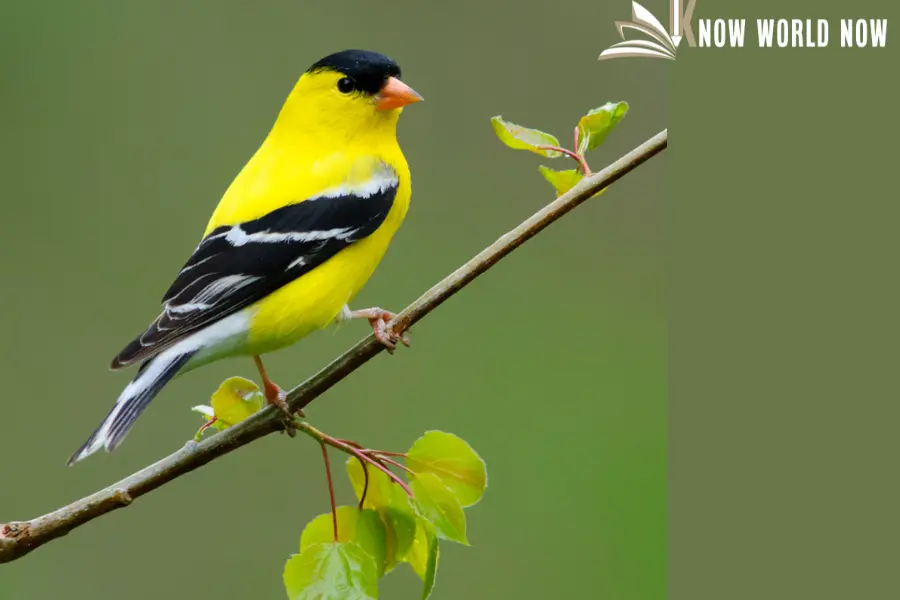
| Characteristics | Information |
| Scientific name | Spinus tristis |
| Color | Yellow body with black wings and tail, and white patches on wings |
| Average lifespan | 2-3 years in the wild |
| Size | 4.3-5.1 inches in length |
| Wingspan | 7.5-8.7 inches |
| Weight | 0.4-0.7 ounces |
| Diet | Seeds and insects |
| Habitat | Fields, meadows, and gardens |
| Flying speed | 15-20 mph |
American Goldfinches are very common not just in Wyoming but in North America. Their bright yellow color and white patches on the wings give them a distinctive look from most birds. Many people think of them as good omens because of their bright colors.
They mostly live in fields, meadows, and gardens. If you have your own garden, then they will be your regular visitors. However, they are wild birds and not very friendly to humans. So, be careful of that.
These beautiful little birds have a short life span. They can live up to three years in the wild. They attract mates through singing and courtship displays and may engage in courtship-feeding behaviors.
9. Dark-eyed Junco
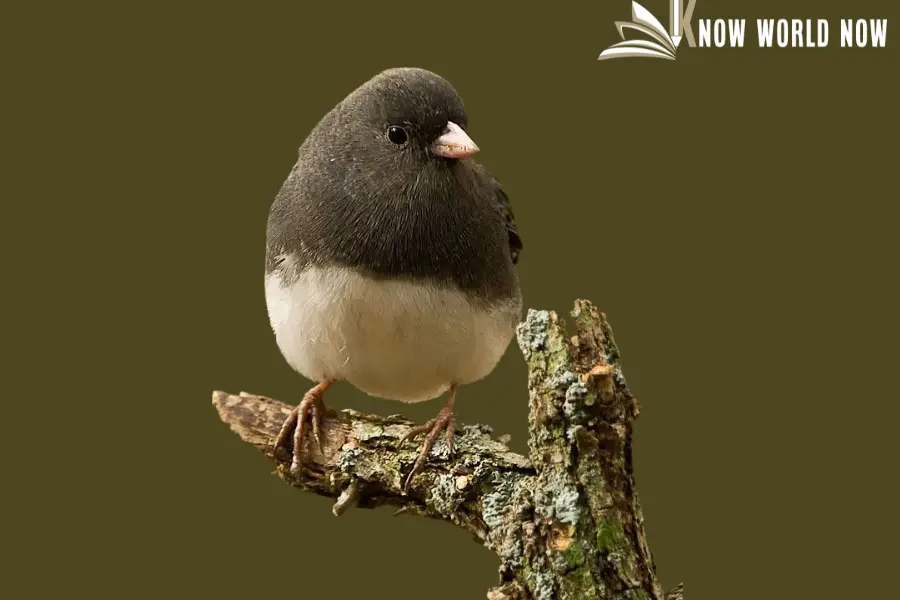
| Characteristics | Information |
| Scientific name | Junco hyemalis |
| Color | Dark gray head and upperparts, grayish-white underparts, and pink bill |
| Average lifespan | 3-4 years in the wild |
| Size | 5.1-5.9 inches in length |
| Wingspan | 7-10 inches |
| Weight | 0.6-1.1 ounces |
| Diet | Seeds, insects, and fruits |
| Habitat | Forests, woodlands, and suburban areas |
| Flying speed | 15-20 mph |
One of the loveliest birds Wyoming! They are small birds with beautiful gray eyes. You may want to have them sit on your shoulder, but you better control yourself. Dark-eyed Junco is not a domestic bird. And they do not like to be in human companionship.
They sing a simple, musical trill or warble, and males may also perform courtship displays such as tail flicking and wing spreading to attract females. They are most commonly seen during the winter months, from September to April, when they migrate south from their breeding grounds in Canada and Alaska.
10. Northern Flicker
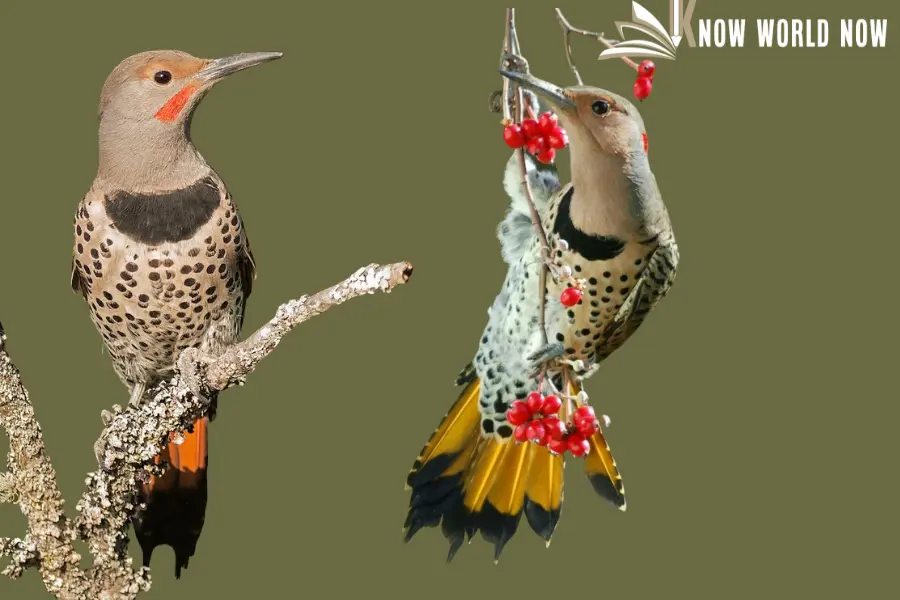
| Characteristics | Information |
| Scientific name | Colaptes auratus |
| Color | Brown body with black spots, and a red patch on the nape of the neck |
| Average lifespan | 4-9 years in the wild |
| Size | 11-14 inches in length |
| Wingspan | 16-21 inches |
| Weight | 3.9-5.6 ounces |
| Diet | Insects, fruits, and seeds |
| Habitat | Forests, woodlands, and suburban areas |
| Flying speed | 30-45 mph |
Northern flickers have a very distinctive look, and you can easily identify them. The black spots on their brown bodies make them look beautiful and adorable. Since Wyoming is a very friendly location for birds, they gather more in number from April to July for breeding.
They attract mates through vocalizations, drumming on trees or other resonant objects, and territorial displays. They produce a unique “wicka-wicka-wicka” call and may also make a variety of other vocalizations, including a harsh “kyeer” call.
An interesting fact about them is that they can fly more than forty miles in an hour and can live about nine years in the wild.
11. Yellow Warbler
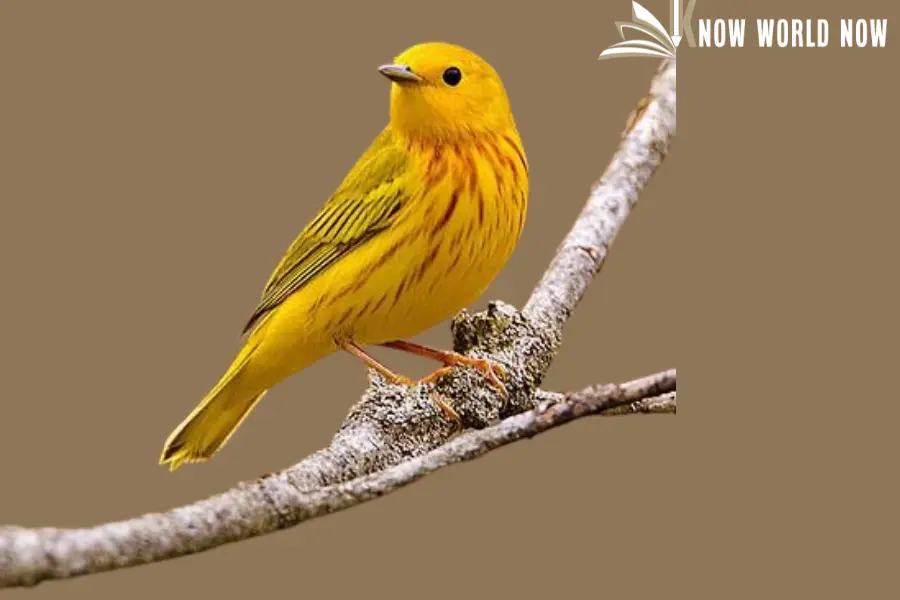
| Characteristics | Information |
| Scientific name | Setophaga petechia |
| Color | Bright yellow body with reddish streaks on breast and black wings |
| Average lifespan | 2-7 years in the wild |
| Size | 4.3-5.1 inches in length |
| Wingspan | 6.7-7.9 inches |
| Weight | 0.3-0.4 ounces |
| Diet | Insects and fruits |
| Habitat | Forest edges, shrubby areas, and wetlands |
| Flying speed | 20-25 mph |
These bright yellow-colored birds look more adorable when they are small. They are roughly five inches and live on insects and fruits. You can spot them in the forest edges, shrubs areas, and wetlands.
They are seen any time of the year in Wyoming but become more populated during the breeding season. The breeding season lasts from May to August.
They can enchant you with their cheerful, melodic song that often includes a rising and falling trill or warble. Their distinctive “sweet-sweet-sweet-I’m-so-sweet” call, which they may use to communicate with their mate, is also very popular.
12. Chipping Sparrow
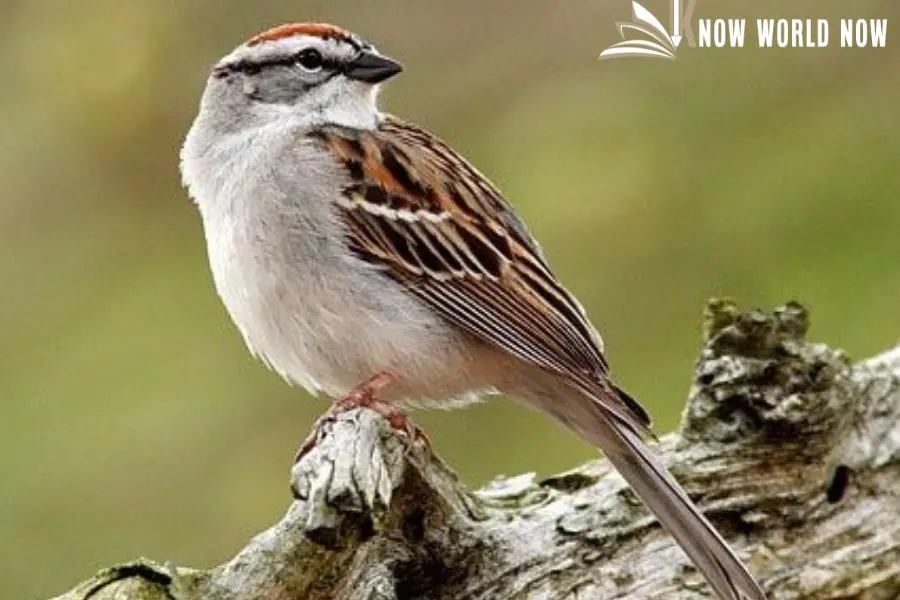
| Characteristics | Information |
| Scientific name | Spizella passerina |
| Color | Brown cap and back, gray underparts, and chestnut crown and nape |
| Average lifespan | 2-4 years in the wild |
| Size | 4.7-5.9 inches in length |
| Wingspan | 7.9-9.8 inches |
| Weight | 0.4-0.6 ounces |
| Diet | Seeds and insects |
| Habitat | Open woodlands, fields, and gardens |
| Flying speed | 15-20 mph |
The reddish cap and cheerful, trilling song make these little birds very adorable. They sing a bright, musical trill or warble that often includes a series of high-pitched notes followed by a descending trill.
They prefer to live in open places like fields, open woodlands, and gardens instead of in forests. If you want to enjoy their song, you can hear it anytime from April to August, as they sing more frequently during this time to attract their mates.
Chipping Sparrows are also known for their nesting behavior, which often involves building a cup-shaped nest. They make their nests in a tree or shrub and line it with grass and other soft materials.
13. European Starling
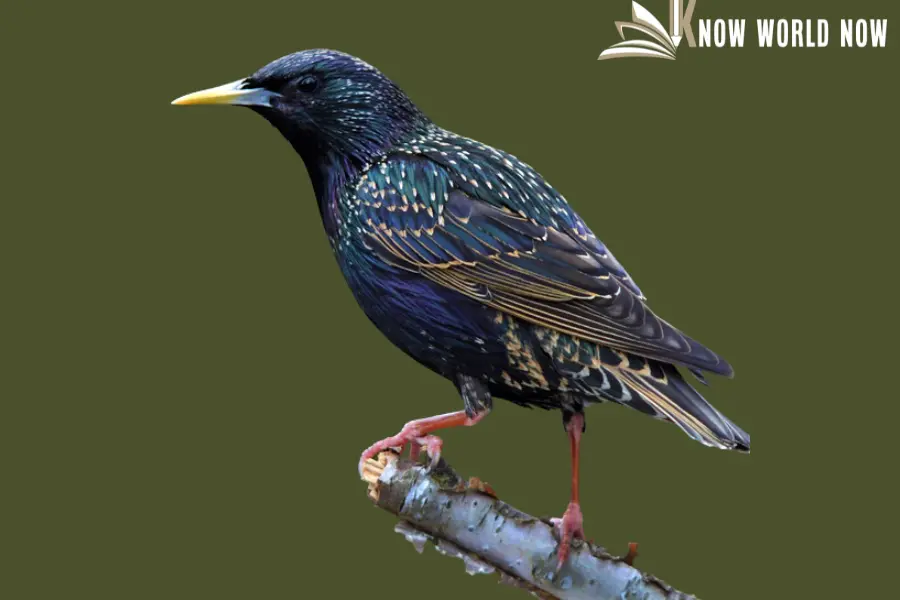
| Characteristics | Information |
| Scientific name | Sturnus vulgaris |
| Color | Blackish-purple iridescent plumage with yellow bill and legs |
| Average lifespan | 2-3 years in the wild |
| Size | 7.5-9.1 inches in length |
| Wingspan | 12-16 inches |
| Weight | 2.1-3.4 ounces |
| Diet | Insects, fruits, and seeds |
| Habitat | Urban areas, farmlands, and open fields |
| Flying speed | 40-50 mph |
European Starling is a non-native species. You can find them in Wyoming and throughout North America year-round. Urban and suburban are their common habitats. But that does not mean that you won’t see them in rural areas at all. Because of their density, they are often called the Common Starlings.
European Starlings are popular for their ability to mimic other bird songs and for their acrobatic flight displays. Their acrobatics is an interesting sight to enjoy. Their acrobats typically involve a series of aerial maneuvers, such as dives, twists, and rolls, as well as wing flapping and tail spreading.
They can also fly at high speeds and can make sudden changes in direction, which can make them difficult to track with the naked eye.
14. Pine Siskin
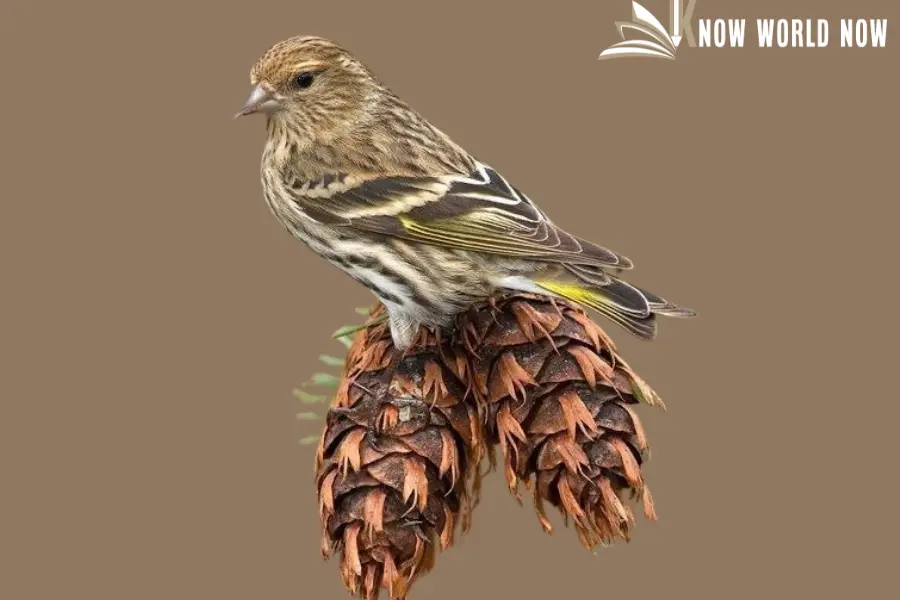
| Characteristics | Information |
| Scientific name | Spinus pinus |
| Color | Brown and gray streaked body with yellow wing bars and tail edges |
| Average lifespan | 2-3 years in the wild |
| Size | 4.3-5.1 inches in length |
| Wingspan | 7.5-9.1 inches |
| Weight | 0.4-0.6 ounces |
| Diet | Seeds and insects |
| Habitat | Coniferous forests and open woodlands |
| Flying speed | 25-30 mph |
Pine Siskins are migratory birds, and you can easily spot them in forests and woodlands of Wyoming in winter, typically from October to April. If you are a bird feeder and lucky, they may also visit your backyard.
Pine Siskins are popular among birdwatchers for their distinctive streaked plumage and sharp, buzzing call. They attract mates through singing and courtship displays. Their songs consist of a series of high-pitched, musical trills and warbles, often delivered from a perch or while in flight.
Pine Siskins are also known for their nomadic behavior, which can lead them to move rapidly and unpredictably from place to place in search of food. This behavior, along with their irruptive population dynamics, makes them a challenging and exciting bird to observe.
15. White-crowned Sparrow

| Characteristics | Information |
| Scientific name | Zonotrichia leucophrys |
| Color | Gray and brown upperparts with a distinctive black and white striped head, and brown and white underparts |
| Average lifespan | 2-3 years in the wild |
| Size | 6.3-7.5 inches in length |
| Wingspan | 7.9-9.8 inches |
| Weight | 0.8-1.1 ounces |
| Diet | Seeds, insects, and fruits |
| Habitat | Open woods, brushy areas, and shrublands |
| Flying speed | 15-20 mph |
White-crowned Sparrow is a gray and brown-colored bird with a black and white striped head. They are small birds with a small wingspan of fewer than 10 inches that allow them to fly at a speed of 20 miles per hour.
Though they are not very social or friendly to humans, you can attract them closer by offering food. They have a reputation as a melodious singing birds. Their songs consist of a series of clear, whistled notes.
Their mating is also a pleasant sight to experience. Male birds engage in visual displays such as raising their wings and flicking their tails to attract female birds during the breeding season.
16. Cedar Waxwing
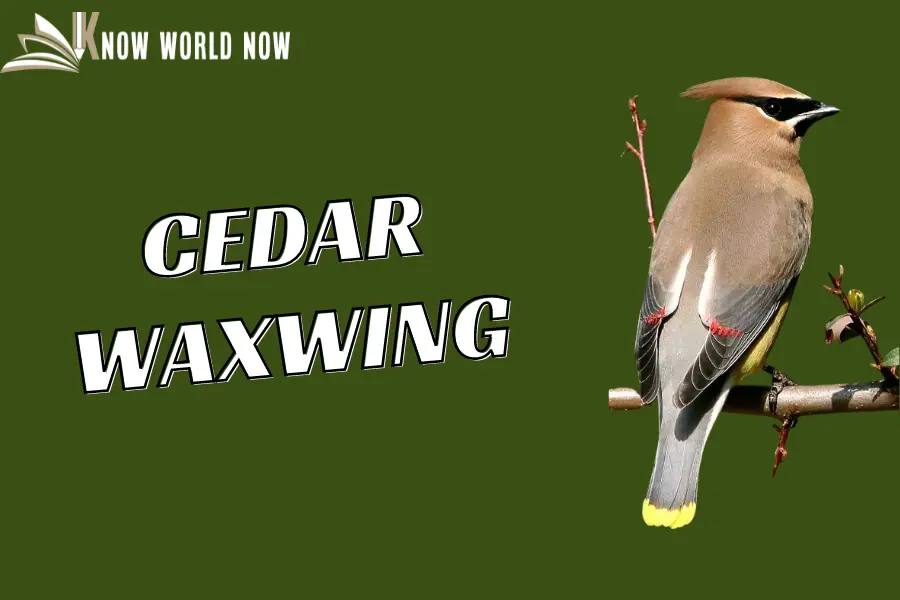
| Characteristics | Information |
| Scientific name | Bombycilla cedrorum |
| Color | Brown and gray with a black mask and yellow-tipped tail |
| Average lifespan | 5-6 years in the wild |
| Size | 6.3-7.1 inches in length |
| Wingspan | 8.7-11 inches |
| Weight | 1-1.4 ounces |
| Diet | Fruits and insects |
| Habitat | Open woodlands and riparian areas |
| Flying speed | 20-30 mph |
If you want to see some summer birds Wyoming, keep the Cedar Waxwing on the list. These lovely birds have different colors on their body, which make them very easy to spot. You can find them easily in the open woodlands and riparian areas.
Cedar Waxwing’s diet includes fruits and insects. They are very little and light. They hardly weigh 2 ounces. Despite their small size, they can survive about six years in the wild. The black mask and bright red tips on their wings make them a must-see for bird watchers.
Their songs consist of high-pitched, lisping notes delivered in short phrases, often from a prominent perch or while in flight.
17. Red-tailed Hawk
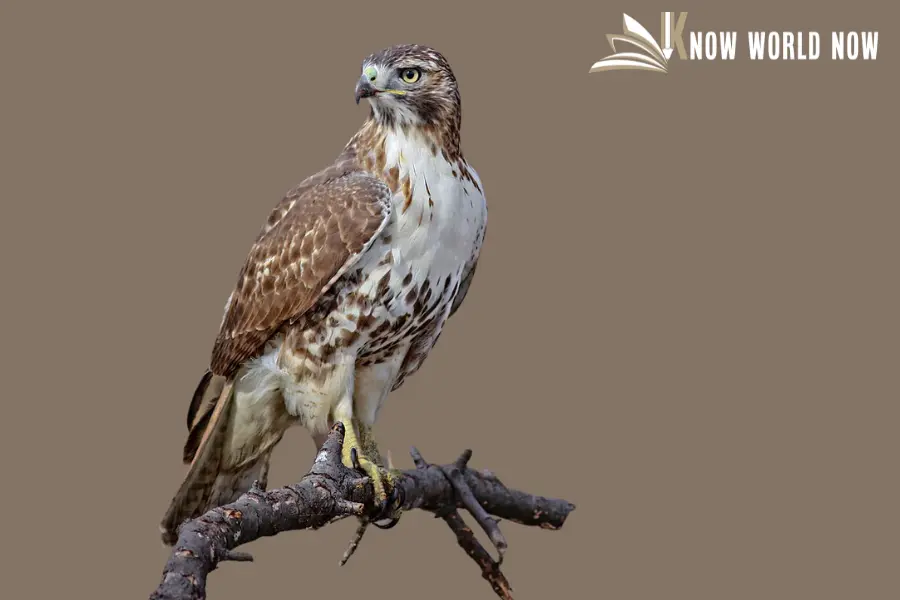
| Characteristics | Information |
| Scientific name | Buteo jamaicensis |
| Color | Brownish-red upperparts with a pale underbelly, and a distinctive red tail |
| Average lifespan | Up to 21 years in the wild |
| Size | 18-26 inches in length |
| Wingspan | 4-5.5 feet |
| Weight | 1.5-3.5 pounds |
| Diet | Small mammals, birds, and reptiles |
| Habitat | Open country, forests, and deserts |
| Flying speed | 20-40 mph |
Don’t think that all the birds Wyoming are small and tiny. There are big bards as well. If you prefer to see some bigger ones, you can check out the forest. You will notice their medium-sized birds with red tails, known as Red-tailed hawks.
They have a wingspan of more than five feet and can cross around forty miles in an hour. If you want to witness their mating, it is difficult to say when they mate. They have distinctive vocalizations, which consist of a loud, raspy scream often used during territorial displays or to signal danger to their young.
18. Mallard
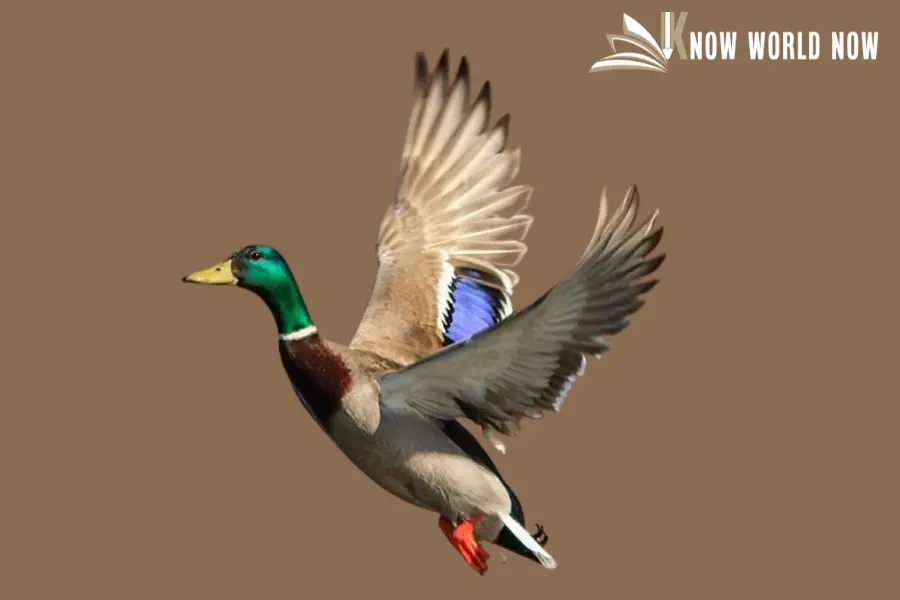
| Characteristics | Information |
| Scientific name | Anas platyrhynchos |
| Color | Male has a green head, white collar, brown chest, gray body, and black rear end; female has a mottled brown and gray body |
| Average lifespan | 5-10 years in the wild |
| Size | 20-26 inches in length |
| Wingspan | 32-39 inches |
| Weight | 2.5-3.5 pounds |
| Diet | Aquatic plants, insects, and small fish |
| Habitat | Wetlands, marshes, and ponds |
| Flying speed | 40-65 mph |
The Mallard, or wild duck, is a common figure in the wetlands of Wyoming. Their green head looks very colorful in contrast to their gray body. They are large in size, up to 26 inches in length.
They are not just popular among birdwatchers like you; rather, they are also very popular among hunters. They can weigh 3.5 pounds which makes them a good source of meat for hunters.
Mallards breed during the spring and summer months, with males courting females through a variety of displays, including head bobbing, tail wagging, and vocalizations. They are not aggressive towards humans but can become habituated to humans in areas where they are frequently fed, which can lead to human-wildlife conflicts.
19. Great Blue Heron
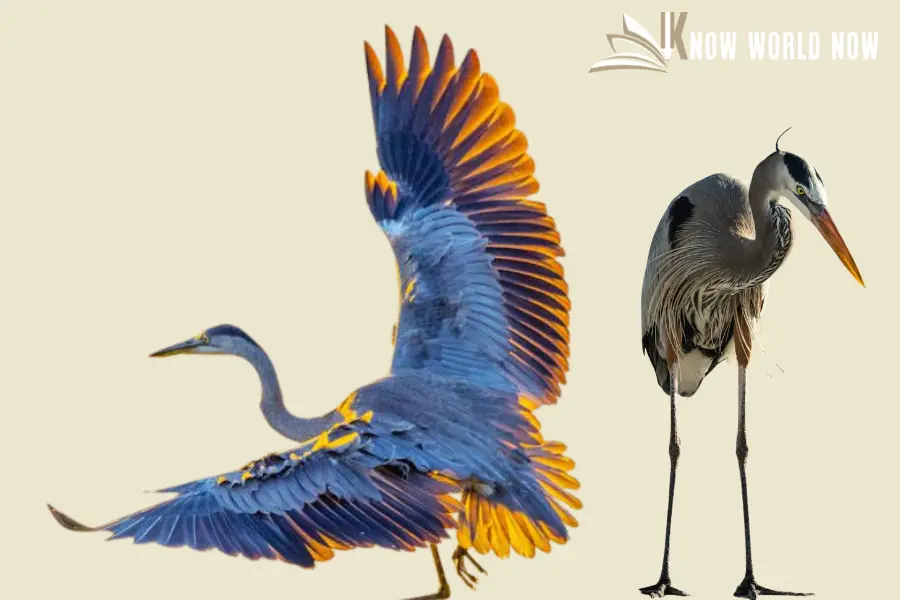
| Characteristics | Information |
| Scientific name | Ardea herodias |
| Color | Blue-gray upperparts, grayish-white underparts, and a distinctive long, S-shaped neck |
| Average lifespan | Up to 15 years in the wild |
| Size | 3.2-4.5 feet in height |
| Wingspan | 5.5-6.6 feet |
| Weight | 4.6-7.3 pounds |
| Diet | Fish, frogs, and other small aquatic animals |
| Habitat | Wetlands, marshes, and shorelines |
| Flying speed | 20-30 mph |
Great Blue Herons are long-necked birds. They are huge in size, often more than four feet tall, thanks to their long neck which they keep curved in an S shape. Their large wings help them cross more than about thirty miles per hour.
Birdwatchers love to see them because of their massive size. If you are not familiar with large birds, you are bound to get astonished to see their huge tall size. These giant birds have a long life as well; many of them live up to fifteen years.
Their diet includes fish, frogs, and other small aquatic animals. These birds also play an essential role in balancing the ecosystem.
You can get close to them since they are not very aggressive. But it is better to have some distance as they can get skittish. They are known for their distinctive squawk-like calls, which are used for communication among individuals in a colony.
20. Mourning Dove
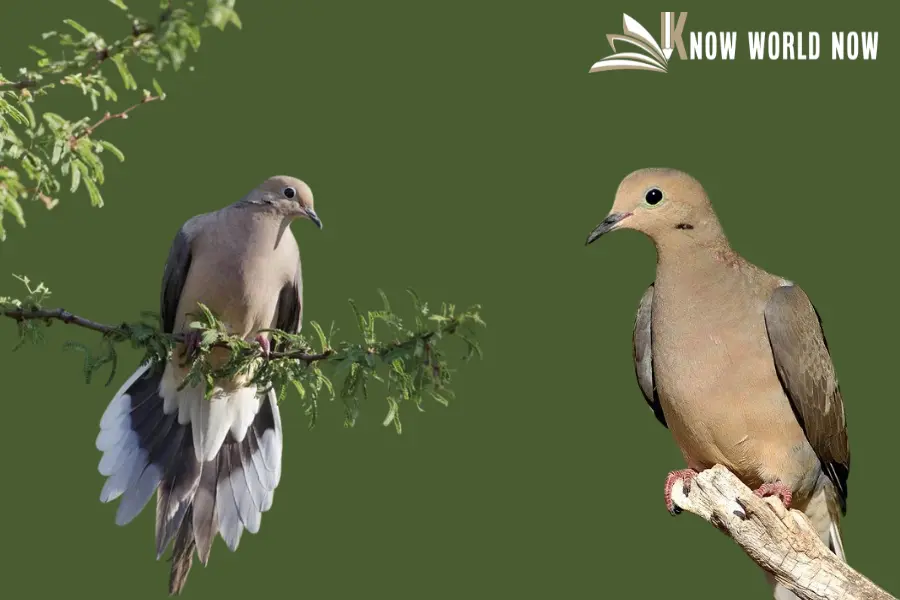
| Characteristics | Information |
| Scientific name | Zenaida macroura |
| Color | Light brown upperparts with darker spots, and a buff-colored underbelly |
| Average lifespan | 1-3 years in the wild |
| Size | 12 inches in length |
| Wingspan | 17-19 inches |
| Weight | 4-6 ounces |
| Diet | Seeds, fruits, and insects |
| Habitat | Urban and suburban areas, farmland, and open woods |
| Flying speed | 30-40 mph |
You are most probably familiar with white and grayish doves. But Mourning doves are very interesting-looking birds. Their light brown underparts with darker spots make them very unique. They are of regular dove size, about twelve inches.
Mourning Doves are quite light. They typically weigh around six ounces. Being so light, they can surpass forty miles in an hour. They are neither very friendly nor aggressive. If you feed them, they will tolerate your presence.
They are a beloved species among birdwatchers and nature enthusiasts. They look attractive with a plump, compact bodies, small heads, and long, pointed tails.
You can sport them in Wyoming round the year, but they are spotted in abundance during the breeding season between April and August.
21. Killdeer
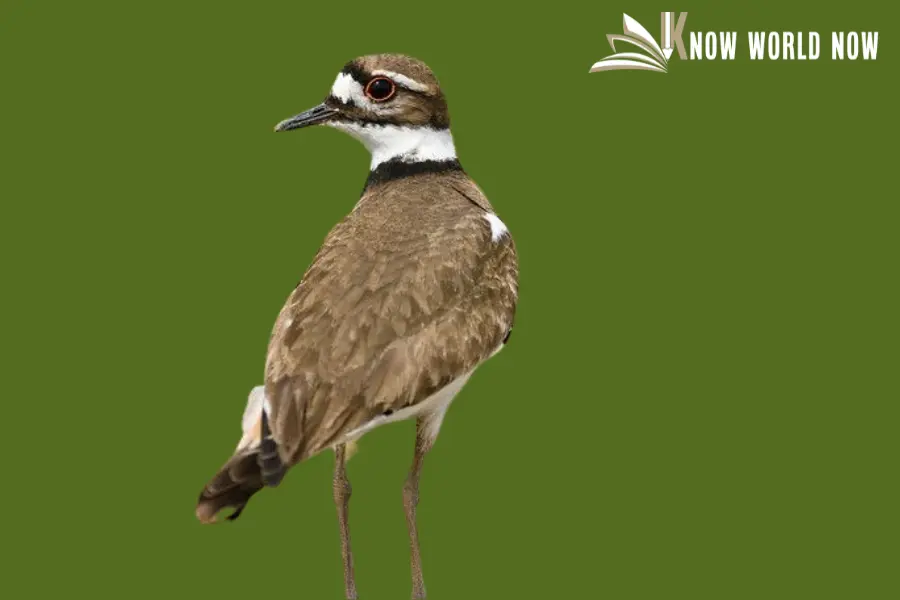
| Characteristics | Information |
| Scientific name | Charadrius vociferus |
| Color | Brownish upperparts with white underparts, and distinctive black and white bands on the neck and forehead |
| Average lifespan | Up to 10 years in the wild |
| Size | 8-11 inches in length |
| Wingspan | 23-25 inches |
| Weight | 2.5-4 ounces |
| Diet | Insects and small invertebrates |
| Habitat | Open fields, mudflats, and shorelines |
| Flying speed | 25-45 mph |
Don’t get scared by the name. They do not kill deer, nor are they very aggressive. They are one of the common birds Wyoming that you will see in open fields, pastures, and along shorelines. Their distinctive vocalization makes them a darling to birdwatchers.
Breeding season for Killdeer typically occurs between April and August, with males performing courtship displays such as aerial acrobatics and calling to attract females. Once a pair has formed, the female will build a shallow scrape nest on the ground, often in a gravelly or sandy area.
They are typically not aggressive. But be careful of their nest and young children. Or else they will show you a temper.
22. Bald Eagle
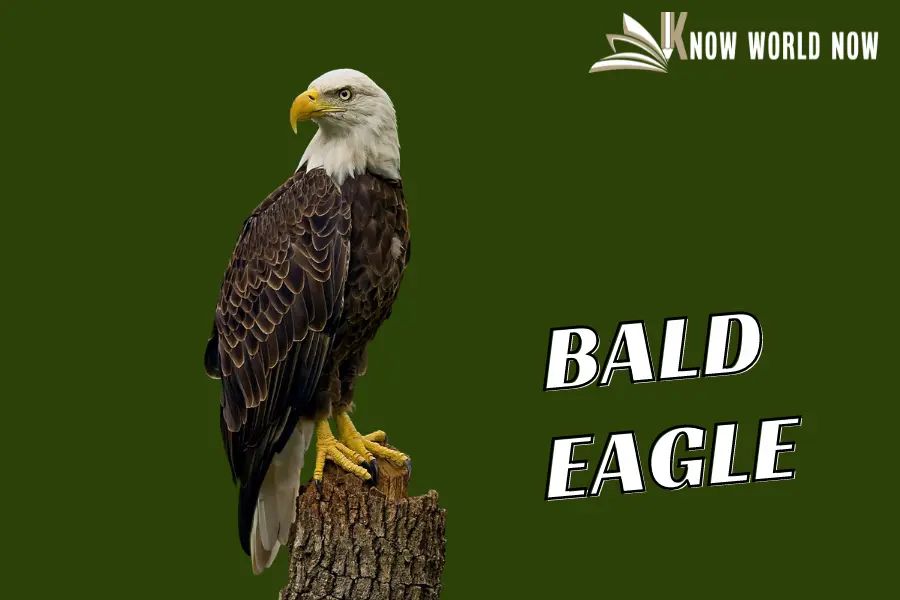
| Characteristics | Information |
| Scientific name | Haliaeetus leucocephalus |
| Color | Dark brown body, white head and tail, and a yellow beak |
| Average lifespan | Up to 28 years in the wild |
| Size | 2.5-3.3 feet in length |
| Wingspan | 6.5-7.5 feet |
| Weight | 6.5-14 pounds |
| Diet | Fish, small mammals, and waterfowl |
| Habitat | Near large bodies of water such as lakes, rivers, and coasts |
| Flying speed | 30-35 mph |
Bald Eagle is one of the most easily recognizable for their majestic look. They are great hunters and often are used as a symbol of a predator. You can see them in abundance in winter near lakes and rivers.
From November to March, they migrate to the state in search of food and more comfortable weather. They are birds of prey. They eat fish, small mammals, and waterfowl to survive. Therefore, other birds are also scared of them.
Do not think of going very near to them. They are wild and aggressive. Also, avoid disturbing them. Because Bald Eagles are protected under federal law, and it is illegal to harm or harass them.
23. American Kestrel
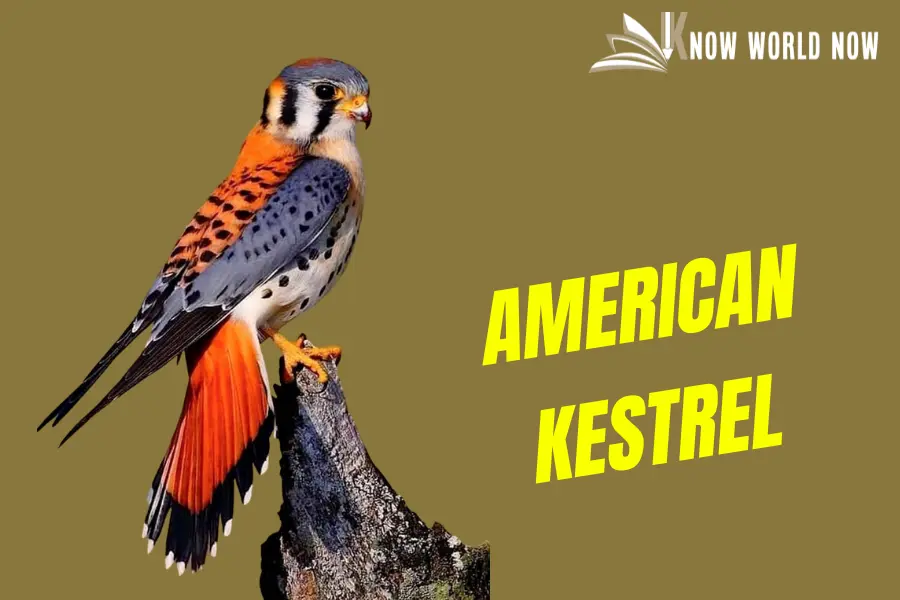
| Characteristics | Information |
| Scientific name | Falco sparverius |
| Color | Rusty brown and white body, blue-gray wings, and a distinctive black and white head |
| Average lifespan | Up to 5-10 years in the wild |
| Size | 8-12 inches in length |
| Wingspan | 20-24 inches |
| Weight | 2.8-5.8 ounces |
| Diet | Insects, small mammals, and birds |
| Habitat | Open fields, grasslands, and woodland edges |
| Flying speed | 20-25 mph |
Your Wyoming bird seeing will be incomplete if you miss seeing the American Kestrels. Though they are easily spotted in open fields, if you are not fortunate enough, then you should go to the woodland edges and grasslands. But do not return without seeing one of the finest birds in the world.
Their rusty brown and white bodies with a pair of blue-gray wings and black and white heads make them so adorable. They are small birds of 8-12 inches but have a large wingspan of more than twenty inches.
However, do not get fooled by their beautiful look. They may seem harmless, innocent, and fragile little birds, but they are skilled hunters. Their diet consists of insects, small mammals, and birds.
They use their keen eyesight and fast flight to catch prey, often hovering in mid-air before swooping down to capture their target. It is exciting to see them hunt.
24. Osprey
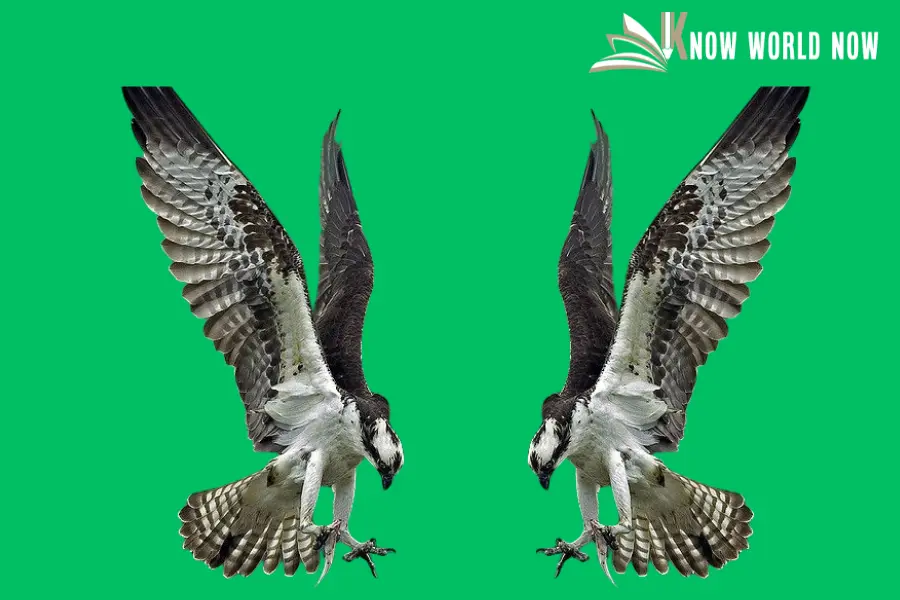
| Characteristics | Information |
| Scientific name | Pandion haliaetus |
| Color | Dark brown body and wings, white head and underparts, and a distinctive hooked beak |
| Average lifespan | Up to 30 years in the wild |
| Size | 2-2.5 feet in length |
| Wingspan | 5.5-6.6 feet |
| Weight | 3.1-4.4 pounds |
| Diet | Fish |
| Habitat | Near large bodies of water such as lakes, rivers, and coasts |
| Flying speed | 30-40 mph |
If you go near the rivers of Wyoming, then you will see Ospreys there. They are also called sea hawks and river hawks. Their diet primarily consists of fish. They are skilled hunters, and a single Osprey eats eight fish in a day on average.
Their dark brown body and white wings give them the look of a potential danger, which they are for fish. You can understand that they are very fast and can fly at a speed of forty miles per hour. It’s a phenomenal experience to witness them hunting fish. You will be thrilled to see them diving feet-first into the water to catch fish with their sharp talons.
Ospreys are migratory birds, spending their winters in warmer climates such as Central and South America.
25. Canada Goose
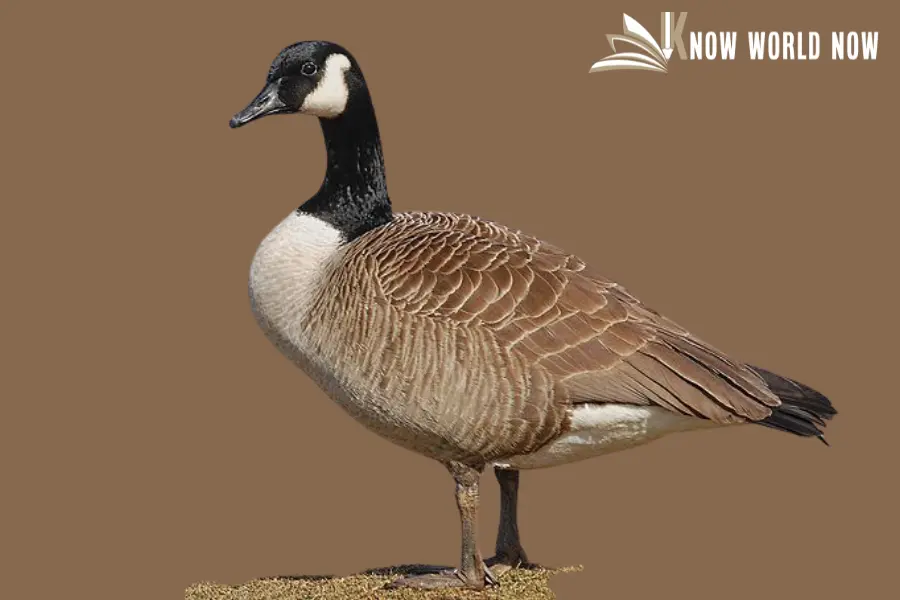
| Characteristics | Information |
| Scientific name | Branta canadensis |
| Color | Black head and neck, brownish-gray body, and a white chinstrap |
| Average lifespan | Up to 24 years in the wild |
| Size | 2.6-3.3 feet in length |
| Wingspan | 4.6-5.6 feet |
| Weight | 7.1-14.3 pounds |
| Diet | Aquatic plants, grasses, and grains |
| Habitat | Lakes, rivers, and other water bodies |
| Flying speed | 30-40 mph |
Though these migratory birds are a common sight in Wyoming during the winter, when they migrate here for better weather, you can also see them around the year. Their black head and neck make them distinctive from other geese.
They can be more than three feet tall and weigh up to 14 pounds, which often makes them the target of hunters. They are usually vegan and survive on aquatic plants, grasses, and grains.
26. Common Raven
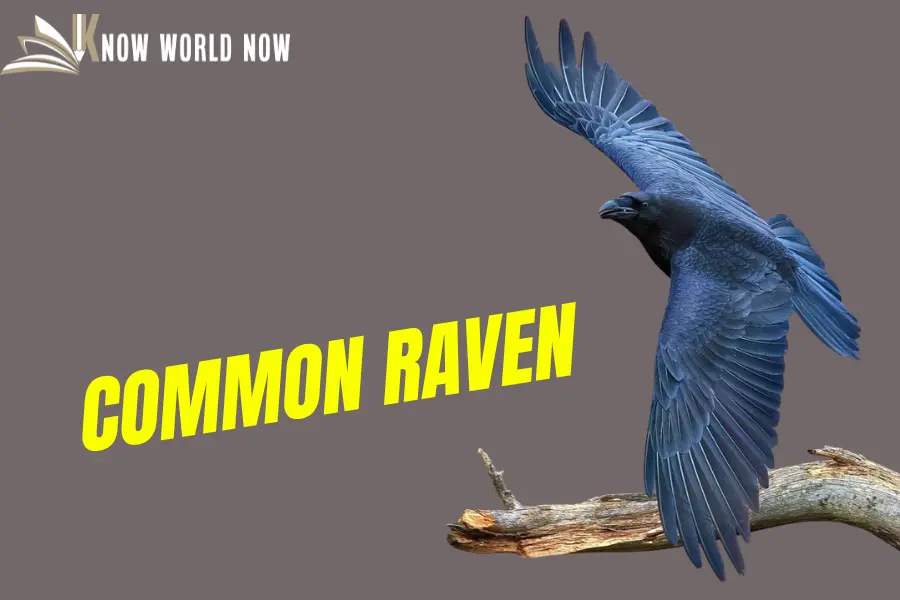
| Characteristics | Information |
| Scientific name | Corvus corax |
| Color | Glossy black feathers and a heavy, curved black beak |
| Average lifespan | Up to 10-15 years in the wild |
| Size | 21-27 inches in length |
| Wingspan | 3.5-4.5 feet |
| Weight | 1.5-4.6 pounds |
| Diet | Omnivorous – insects, small mammals, birds, carrion, and plant material |
| Habitat | Diverse habitats including forests, mountains, and deserts |
| Flying speed | 20-30 mph |
You can guess the reason why it has the title “common” as its first name. They are very common in Wyoming. They fly around the state all year round. You don’t even have to look for them. They will appear on their own. They live in diverse habitats.
These ravens are omnivores, meaning that they eat anything they find. It can be insects, small mammals, birds, carrion, and plants as well. AS they can eat almost anything, they are never short of food and can live up to fifteen years.
They are usually not aggressive towards humans, nor do they want to be too close to humans. But if you go hiking in the Wyoming mountains, they may hang out around you for food. Remember that they are very intelligent birds. They can also use some sort of tools. Now, won’t that be interesting to see some birds using tools?
27. Northern Harrier
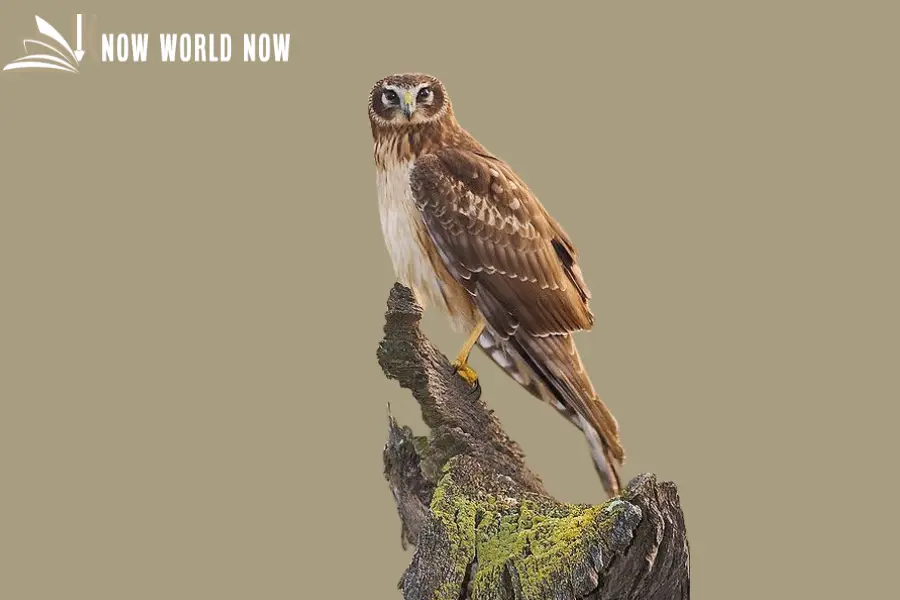
| Characteristics | Information |
| Scientific name | Circus hudsonius |
| Color | Brownish-gray body with a white rump patch, black wingtips, and a white head with a black eye stripe |
| Average lifespan | Up to 10 years in the wild |
| Size | 18-24 inches in length |
| Wingspan | 3.5-4.5 feet |
| Weight | 10-26 ounces |
| Diet | Small mammals, birds, and reptiles |
| Habitat | Open areas such as marshes, fields, and grasslands |
| Flying speed | Up to 35 mph |
Northern Harriers are fairly common in Wyoming, especially during their breeding season, which is from March to August. You can easily sport these big birds in open areas. Just go to the grasslands or fields, and you will be able to see these brownish-gray birds.
Northern Harriers produce a variety of vocalizations, including a harsh, barking call that is often described as “kek-kek-kek” or “skreee.” You should not think of playing with them since they are also raptors and so like to maintain a distance from humans.
These birds like to hunt in the wetlands, for which they are often referred to as “marsh HawK.”
28. American Crow
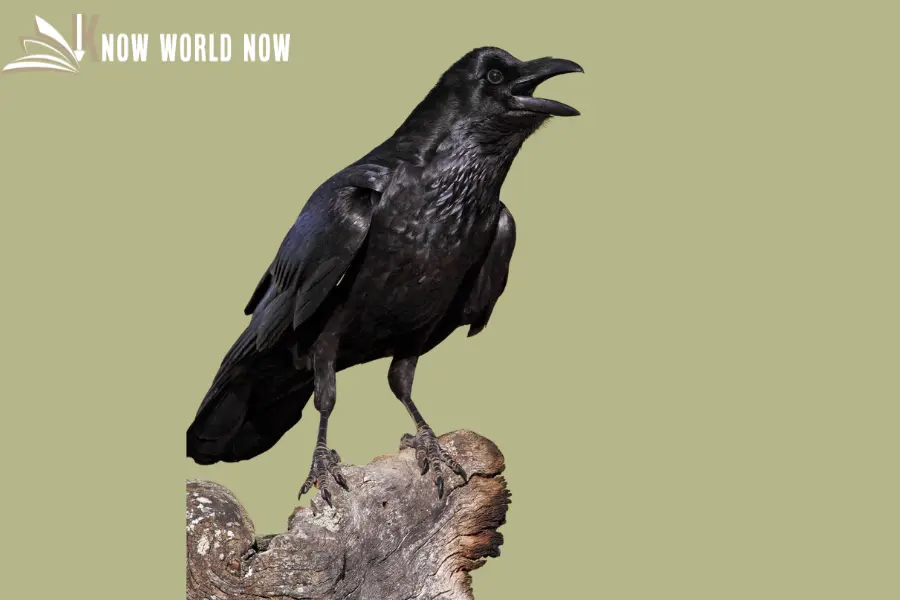
| Characteristics | Information |
| Scientific name | Corvus brachyrhynchos |
| Color | Glossy black feathers with a sturdy black beak |
| Average lifespan | Up to 7-8 years in the wild |
| Size | 16-21 inches in length |
| Wingspan | 3-4 feet |
| Weight | 11-21 ounces |
| Diet | Omnivorous – insects, small mammals, birds, carrion, and plant material |
| Habitat | Diverse habitats, including forests, urban areas, and farmland |
| Flying speed | 20-30 mph |
Well, while planning to see a lot of birds, watching crows may be the last on your list. But as we are speaking about the common birds Wyoming, we cannot leave the American Crow behind. You will see them flying any time of the year.
They are of medium size, varying from 16 to twenty-one inches. They are omnivores as well and eat insects, small mammals, birds, carrion, and plant material. They are highly vocal and can make a variety of calls, including the famous “caw caw” sound that most people associate with them.
They are also known to be intelligent and have good memories, which helps them find food sources and remember where they’ve hidden food. Typically, they are gentle and stay on their own. However, they get aggressive towards humans and pets if they think they are endangered.
29. Turkey Vulture
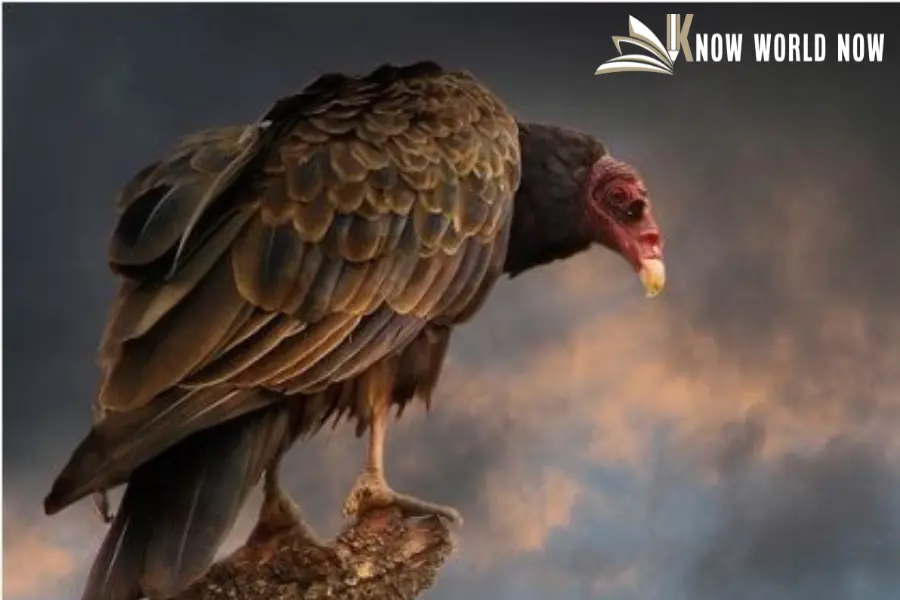
| Characteristics | Information |
| Scientific name | Cathartes aura |
| Color | Dark brownish-black feathers with a red, featherless head |
| Average lifespan | Up to 20 years in the wild |
| Size | 25-32 inches in length |
| Wingspan | 5.5-6.5 feet |
| Weight | 3-5 pounds |
| Diet | Carrion – feeds on dead animals |
| Habitat | Various habitats, including forests, deserts, and coastal areas |
| Flying speed | 30-40 mph |
During the warmer seasons, you will see these Dark brownish-black feathered turkey Vultures in forests and coastal areas. They are quite large, measuring 25-32 inches. But they are not aggressive.
However, do not try to take advantage of their calmness. They get aggressive real quick if they feel threatened. They make hissing and grunting sounds, but they do not sing in the traditional sense.
Here is an interesting fact about Turkey Vultures. They have a strong sense of smell. It may sound unusual for a bird, but they have this ability. They can also fly very fast, approximately forty miles per hour.
30. Merlin
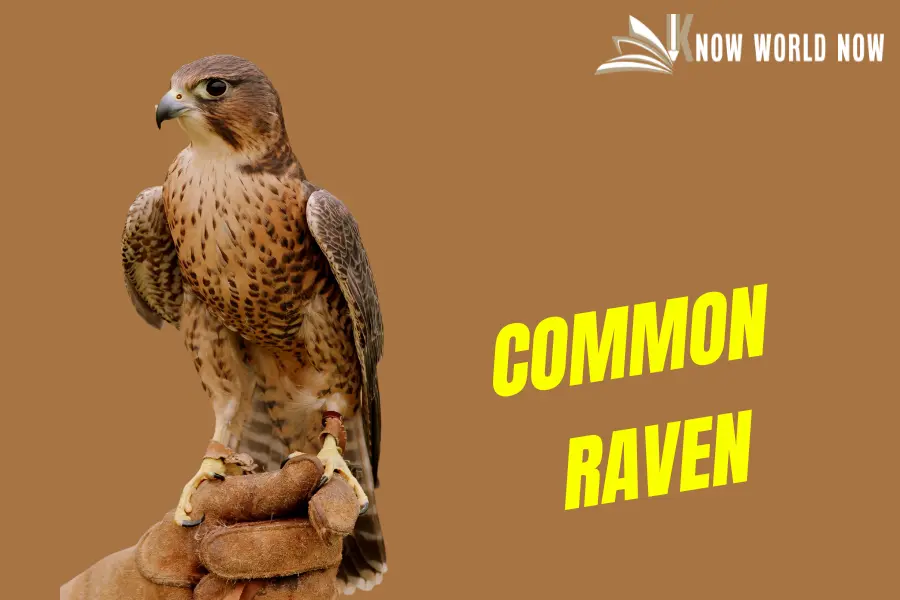
| Characteristics | Information |
| Scientific name | Falco columbarius |
| Color | Blue-gray back with dark streaks, orange-tinged underparts, and a white eyebrow |
| Average lifespan | Up to 6 years in the wild |
| Size | 9-11 inches in length |
| Wingspan | 20-26 inches |
| Weight | 5-8 ounces |
| Diet | Small birds and insects |
| Habitat | Open areas such as meadows, tundra, and grasslands |
| Flying speed | 30-40 mph |
You can see Merlin in abundance in Wyoming from April to August, which is their breeding season. They are small birds, less than 12 inches. They also weigh only 8 ounces at most. But you will be surprised to know that their diet includes small birds.
Merlins are very fast, and they can reach even sixty miles per hour while making a dive. Seeing them may be a pleasant experience for you, but at the same time, you may see them eating other small birds, which is not a pleasant sight.
Merlins are elusive and are not very friendly toward humans. While their populations have remained relatively stable, Merlins are considered to be a species of concern due to habitat loss and other threats.
31. Belted Kingfisher
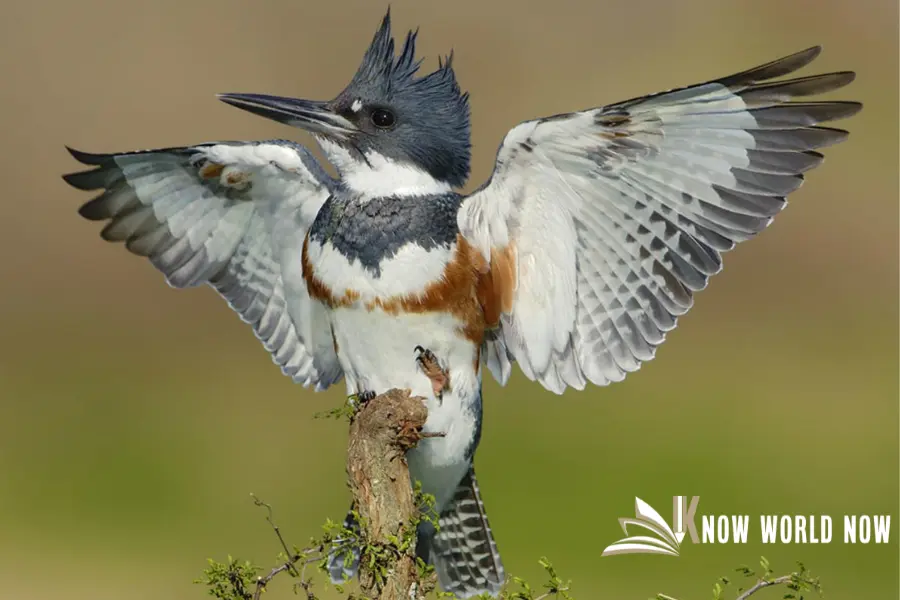
| Characteristics | Information |
| Scientific name | Megaceryle alcyon |
| Color | Blue-gray back and wings, white underparts, and a distinctive blue-gray crest |
| Average lifespan | Up to 5-6 years in the wild |
| Size | 11-14 inches in length |
| Wingspan | 19-21 inches |
| Weight | 4.5-6 ounces |
| Diet | Fish and aquatic invertebrates |
| Habitat | Rivers, streams, lakes, and other bodies of water |
| Flying speed | 25-30 mph |
If Belted Kingfishers were human, they would have been teenage gangsters, at least it seems so from their looks. These blue-gray and white birds have a unique blue-gray crest.
You may want to capture some photos of them, but do it from a distance. These little birds are too shy and skittish. They will fly away if you approach too close. They make a rattling call that sounds like a loud, rapid series of clicks.
Belted Kingfishers are known for their unique hunting behavior, in which they hover in place over water and then dive straight down to catch fish.
32. Common Nighthawk
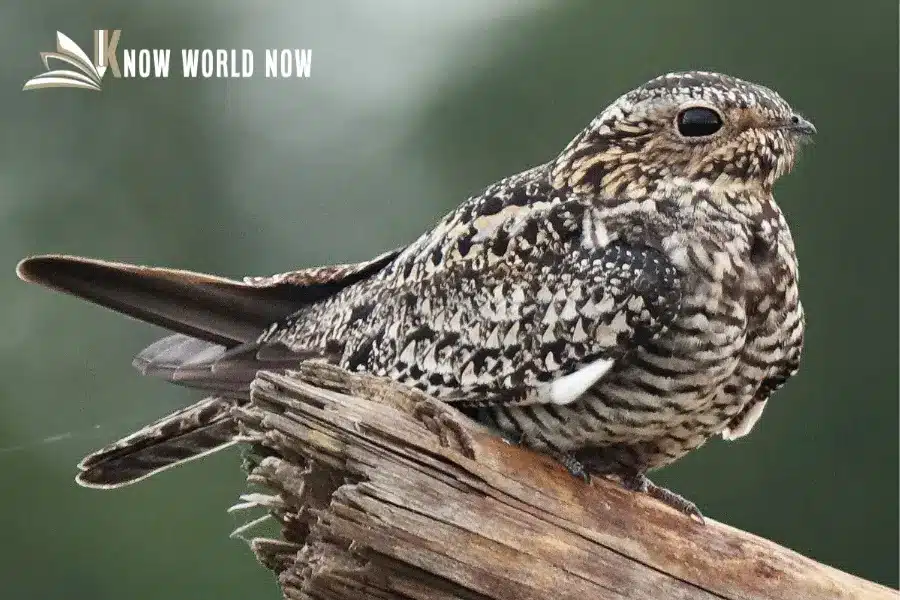
| Characteristics | Information |
| Scientific name | Chordeiles minor |
| Color | Mottled gray-brown and white feathers with distinctive white patches on the wings |
| Average lifespan | Up to 4-5 years in the wild |
| Size | 8-10 inches in length |
| Wingspan | 21-24 inches |
| Weight | 1.8-2.8 ounces |
| Diet | Flying insects |
| Habitat | Open areas such as grasslands, fields, and deserts |
| Flying speed | 20-25 mph |
Do not try to imagine a large bird hearing the word “hawk.” They may have a “hawk” in their names, but they are not hawks. They are much smaller in size. You can see them in grasslands, fields, and deserts.
These little birds live on eating flying insects. They can also fly more than twenty miles per hour, which makes them fast enough to catch little insects. Like most wild birds, they also keep a distance from humans.
33. Barn Swallow
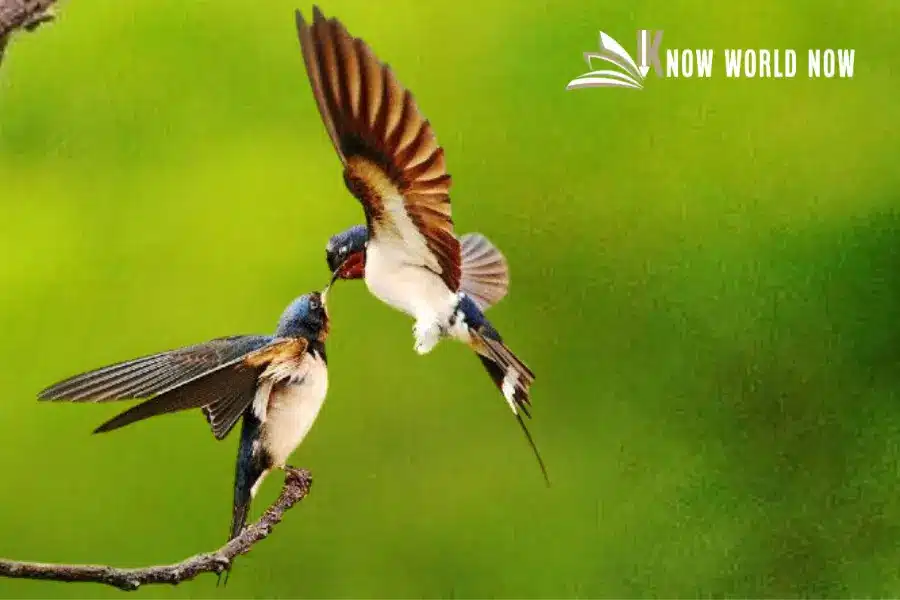
| Characteristics | Information |
| Scientific name | Hirundo rustica |
| Color | Glossy blue-black feathers on the back, wings, and head, with cinnamon-buff underparts and a forked tail |
| Average lifespan | Up to 4-5 years in the wild |
| Size | 6.5-7.5 inches in length |
| Wingspan | 12-13 inches |
| Weight | 0.6-1.2 ounces |
| Diet | Flying insects |
| Habitat | Open areas such as fields, meadows, and wetlands |
| Flying speed | 25-35 mph |
Barn swallows are quite popular among summer birds Wyoming. They are small birds. Their length is less than eight inches. They have glossy blue-black feathers on the back, which attracts bird lovers like you.
They are very lightweight, and some of them weigh less than an ounce. They are very lovely birds, and you may want to have them in your hand. But don’t go too close to them. They are afraid of humans and try to avoid them. So, it is better if you maintain a safe distance.
34. Great Horned Owl
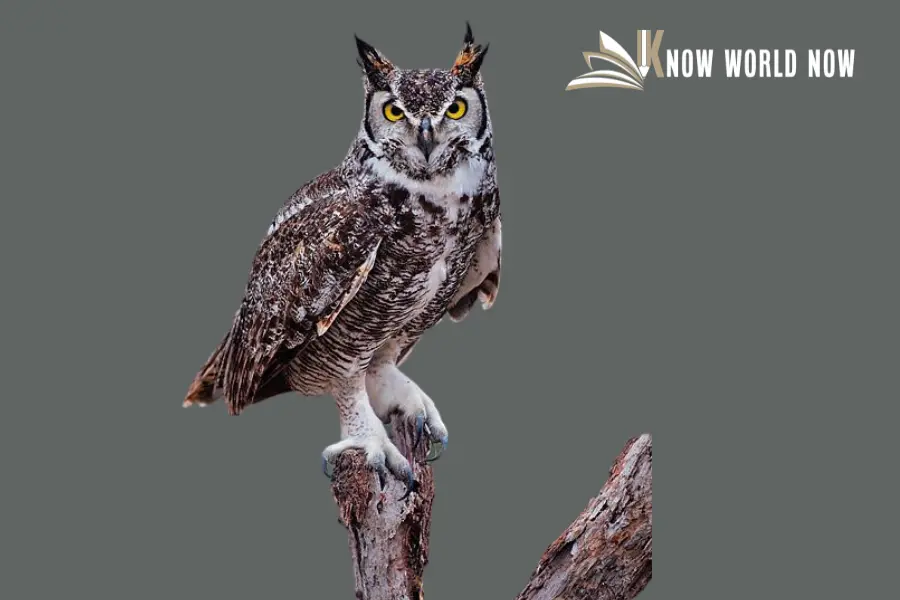
| Characteristics | Information |
| Scientific name | Bubo virginianus |
| Color | Gray-brown feathers with distinctive ear tufts and yellow eyes |
| Average lifespan | Up to 13-15 years in the wild |
| Size | 18-25 inches in length |
| Wingspan | 3.5-4.5 feet |
| Weight | 2-5 pounds |
| Diet | Small mammals, birds, and reptiles |
| Habitat | Diverse habitats including forests, deserts, and wetlands |
| Flying speed | 20-40 mph |
Great Horned Owls are medium size birds with distinctive looks because of their horns on the head.
They are nocturnal birds. It means they are more active at night. But don’t worry. You will not have to search for them at night. Visit the forest edges, and if you are lucky, you can spot them during the day, also.
They are not much of singing birds, but they make a distinctive hooting call. You can describe that as “hoo hoo hoo hoo.” Be careful when approaching them. They are not very friendly but also get aggressive if they feel threatened by you.
35. Swainson’s Hawk

| Characteristics | Information |
| Scientific name | Buteo swainsoni |
| Color | Brown and white with a distinctive dark bib |
| Average lifespan | Up to 20 years |
| Size (length) | 18-22 inches |
| Wingspan | 4.5-5 feet |
| Weight | 1.5-2.5 pounds |
| Diet | Small mammals, birds, reptiles, and insects |
| Habitat | Grasslands, prairies, and agricultural fields |
| Flying speed | Up to 50 mph |
Swainson’s Hawks are medium-sized birds of prey. They are very fast and can move at a speed of 50 miles per hour. It is quite impossible for their prey to escape because of the speed. They have a long pair of wings with about five feet of wingspan.
To see these birds, you need to go near the grasslands and agricultural fields. Swainson’s Hawks are known for their distinctive whistling calls, which can often be heard during their breeding season in Wyoming. These birds travel up to 6,000 miles round-trip between their breeding and wintering grounds
Conclusion
Birds Wyoming are a great source of joy for birdwatchers. You can see a variety of birds there. From little birds to large hawks, you will find them all. These are just the common few birds. Wyoming is a place where you will see a lot more birds.


